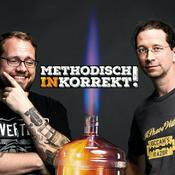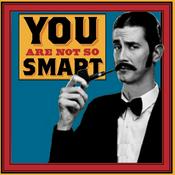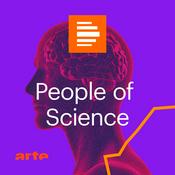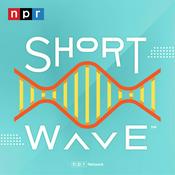18 Episoden
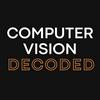
The Evolution of Image Based 3D Reconstruction
14.7.2025 | 32 Min.
In this episode of Computer Vision Decoded, we bring to you a live recording of Jared Heinly presentation on the evolution of image based 3D reconstruction. This recording was from a Computer Vision Decoded meetup in Pittsburgh with a visual component. If you would like to tune in with the visuals, we recommend watching the episode on our YouTube channel: https://youtu.be/Gwib5IcTKHIFollow:Jared on X: https://x.com/JaredHeinlyJonathan on X: https://x.com/jonstephens85This episode is brought to you by EveryPoint. Learn more about how EveryPoint is building an infinitely scalable data collection and processing platform for the next generation of spatial computing applications and services. Learn more at https://www.everypoint.io

Understanding Gaussian Splatting w/ NVIDIA's Ruilong Li
17.6.2025 | 1 Std. 18 Min.
In this episode of Computer Vision Decoded, our hosts Jonathan Stephens and Jared Heinly are joined by Ruilong Li, a researcher at NVIDIA and key contributor to both Nerfstudio and gsplat, to dive deep into 3D Gaussian Splatting. They explore how this relatively new technology works, from the fundamentals of gaussian representations to the optimization process that creates photorealistic 3D scenes. Ruilong explains the technical details behind gaussian splatting, and discusses the development of the popular gsplat library. The conversation covers practical advice for capturing high-quality data, the iterative training process, and how Gaussian splatting compares to other 3D representations like meshes and NeRFs.Links: gsplat: https://github.com/nerfstudio-project/gsplatNerfstudio: https://docs.nerf.studio/Follow:Ruilong on X: https://x.com/ruilong_liJared on X: https://x.com/JaredHeinlyJonathan on X: https://x.com/jonstephens85This episode is brought to you by EveryPoint. Learn more about how EveryPoint is building an infinitely scalable data collection and processing platform for the next generation of spatial computing applications and services. Learn more at https://www.everypoint.io

Camera Types for 3D Reconstruction Explained
14.5.2025 | 1 Std. 15 Min.
In this episode of Computer Vision Decoded, hosts Jonathan Stephens and Jared Heinly explore the various types of cameras used in computer vision and 3D reconstruction. They discuss the strengths and weaknesses of smartphone cameras, DSLR and mirrorless cameras, action cameras, drones, and specialized cameras like 360, thermal, and event cameras. The conversation emphasizes the importance of understanding camera specifications, metadata, and the impact of different lenses on image quality. The hosts also provide practical advice for beginners in 3D reconstruction, encouraging them to start with the cameras they already own.TakeawaysSmartphones are versatile and user-friendly for photography.RAW images preserve more data than JPEGs, aiding in post-processing.Mirrorless and DSLR cameras offer better low-light performance and lens flexibility.Drones provide unique perspectives and programmable flight paths for capturing images.360 cameras allow for quick scene capture but may require additional processing for 3D reconstruction.Event cameras capture rapid changes in intensity, useful for robotics applications.Thermal and multispectral cameras are specialized for specific applications, not typically used for 3D reconstruction.Understanding camera metadata is crucial for effective image processing.Choosing the right camera depends on the specific needs of the project.Starting with a smartphone is a low barrier to entry for beginners in 3D reconstruction.This episode is brought to you by EveryPoint. Learn more about how EveryPoint is building an infinitely scalable data collection and processing platform for the next generation of spatial computing applications and services: https://www.everypoint.io

Understanding 3D Reconstruction with COLMAP
03.4.2025 | 57 Min.
In this episode, Jonathan Stephens and Jared Heinly delve into the intricacies of COLMAP, a powerful tool for 3D reconstruction from images. They discuss the workflow of COLMAP, including feature extraction, correspondence search, incremental reconstruction, and the importance of camera models. The conversation also covers advanced topics like geometric verification, bundle adjustment, and the newer GLOMAP method, which offers a faster alternative to traditional reconstruction techniques. Listeners are encouraged to experiment with COLMAP and learn through hands-on experience.This episode is brought to you by EveryPoint. Learn more about how EveryPoint is building an infinitely scalable data collection and processing platform for the next generation of spatial computing applications and services: https://www.everypoint.io

Tips and Tricks for 3D Reconstruction in Different Environments
04.3.2025 | 1 Std. 21 Min.
In this episode, we discuss practical tips and challenges in 3D reconstruction from images, focusing on various environments such as urban, indoor, and outdoor settings. We explore issues like repetitive structures, lighting conditions, and the impact of reflections and shadows on reconstruction quality. The conversation also touches on the importance of camera motion, lens distortion, and the role of machine learning in enhancing reconstruction processes. Listeners gain insights into optimizing their 3D capture techniques for better results.Key TakeawaysRepetitive structures can confuse computer vision algorithms.Lighting conditions greatly affect image quality and reconstruction accuracy.Wide-angle lenses can help capture more unique features.Indoor environments present unique challenges like textureless walls.Aerial imaging requires careful management of lens distortion.Understanding the application context is crucial for effective 3D reconstruction.Camera motion should be varied to avoid distortion and drift.Planning captures based on goals can lead to better results.This episode is brought to you by EveryPoint. Learn more about how EveryPoint is building an infinitely scalable data collection and processing platform for the next generation of spatial computing applications and services. Learn more at https://www.everypoint.io
Weitere Wissenschaft Podcasts
Trending Wissenschaft Podcasts
Über Computer Vision Decoded
Höre Computer Vision Decoded, Aha! Zehn Minuten Alltags-Wissen und viele andere Podcasts aus aller Welt mit der radio.de-App

Hol dir die kostenlose radio.de App
- Sender und Podcasts favorisieren
- Streamen via Wifi oder Bluetooth
- Unterstützt Carplay & Android Auto
- viele weitere App Funktionen
Hol dir die kostenlose radio.de App
- Sender und Podcasts favorisieren
- Streamen via Wifi oder Bluetooth
- Unterstützt Carplay & Android Auto
- viele weitere App Funktionen


Computer Vision Decoded
App laden,
loshören.







